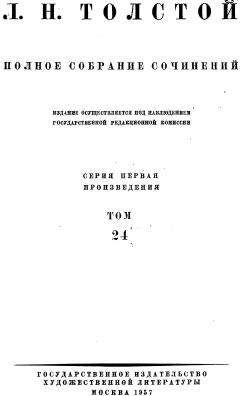Предвзятость подтверждения
Тенденция подтверждать информацию, которая соответствует убеждениям человека.
Просвещение (Новое Просвещение)
«Стадия взросления в развитии человечества, его решимость отказаться от детских вещей, твердо встать на ноги, отказаться от опеки и, прежде всего, использовать свой разум и думать самостоятельно» (Thrower, 2000).
Релятивизм
Абсолютной истины не существует, либо ее невозможно установить.
Сверхъестественное
Находящееся за пределами существования реального мира.
Субъективное заявление
Заявление о предпочтениях, которое не является ни истинным, ни ложным.
Теорема Байеса
Определяет вероятность какого-либо события на основе множества расчетов.
Терапевтический альянс
Связь между терапевтом и клиентом, позволяющая клиенту достичь терапевтических успехов. Впервые этот термин (терапевтический альянс, или терапевтические отношения) появился в статье Эдварда Бордина в 1979 году «Генерализируемость психоаналитического концепта рабочего союза» (Bordin, 1979).
Терапия
Терапевтический процесс, ведущий к восстановлению чего-то поврежденного.
Тэтан
Убеждение сайентологов о духе, «застрявшем» в человеческом теле.
Фальсифицируемый
Способный доказать свою ложность. Обычно применяется к гипотезам.
Феминизм
Равные права для женщин.
Фундаментализм (в эпистемологии) (также фундаменталистская теория истины)
Убеждения обосновываются на базе «фундаментальных» убеждений.
Хадис
Действия или высказывания, приписываемые мусульманскому пророку Мухаммеду, не отраженные в Коране.
Херефон
Близкий друг Сократа. Фигурирует в платоновских диалогах «Апология», «Хармид» и «Горгий».
Четыре всадника
Ричард Докинз, Дэниел Деннет, Сэм Харрис и Кристофер Хитченс. Выражение «Четыре всадника» взято из Книги Откровения Нового завета.
Шермер, Майкл (р. 1954)
Издатель-основатель журнала «Sceptic», исполнительный директор Общества скептиков, автор ежемесячной колонки в «Scientific American», организатор Общества скептиков и автор многочисленных бестселлеров.
Эмпирическое заявление
Заявление об окружающем мире.
Эпистемологический
Связанный с познанием.
Эпистемология
Наука о познании.
Acock, А. С, & Bengston, V.L. (1980). Socialization and attribution processes: Actual versus perceived similarity among parents and youth. Journal of Marriage and Family, 42, 501–515.
Agee, J. (2009). A death in the family (Centennial ed.). New York, NY: Penguin Books.
Ali, M., & Ali, H.Y. (2004). The soul of a butterfly: Reflections on life s journey. New York, NY: Simon & Schuster.
American Philosophical Association. (1990). Critical thinking: A statement of expert consensus for purposes of educational assessment and instruction. “The Delphi Report.” Millbrae, CA: The California Academic Press.
American Psychiatric Association. (2000). Diagnostic and Statistical Manual of Mental Disorders DSM-IV (4th ed.). Washington, DC: American Psychiatric Association.
American Psychiatric Association (2012). АРА DSM-5. Frequently Asked Questions. URL: http://www.dsm5.org/ABOUT/Pages/faq.aspx
Anderson, S.D. (2010). Living dangerously: Seven keys to intentional discipleship. Eugene, OR: Wipf & Stock Pub.
Andrews, D.A., & Friesen, W. (1987). Assessments of Anticriminal Plans and the Prediction of Criminal Futures. Criminal Justice and Behavior, 14(1), 33–37.
Andrews, D.A., Zinger, I., Hoge, R.D., Bonta, J., Gendreau, P., & Cullen, F.T. (1990). Does correctional treatment work? A clinicallyrelevant and psychologically-informed meta-analysis. Criminology, 28(3), 369–404.
Andrews, S. (2013). Deconverted: A journey from religion to reason. Denver, Colorado: Outskirts Press.
Argyle, M. (2000). Psychology and religion: An introduction. London, England: Routledge.
Baltag, A., Rodenhauser, В., & Smets, S. (2011). Doxastic attitudes as belief-revision policies. (Unpublished manuscript). ILLC, University of Amsterdam Amsterdam, Netherlands.
Bandura, A. (1990). Mechanisms of moral disengagement. InW. Reich (Ed.), Origins of terrorism: Psychologies, ideologies, theologies, states of mind (pp. 161–191). Washington, DC: Woodrow Wilson Center Press.
Bandura, A. (1999). Moral disengagement in the perpetration of inhumanities. Personality and Social Psychology Review, 3, 193–209. doi:10.1207/s15327957pspr0303_3
Bandura, A. (2002). Selective moral disengagement in the exercise of moral agency. Journal of Moral Education, 31(2), 102–119. doi:10.1080/ 0305724022014322
Bartlett, T. (2012, August 13). Dusting off God: A new science of religion says God has gotten a bad rap. The Chronicle of Higher Education. URL: http://chronicle.com/article/Does-Religion-Really-Poison/133457/
Barker, D.L. (Performer). (2012). Making the case for atheists. [Web Video]. URL: http://www.youtube.com/watch?v=e7y5slOkwaU&feature=player_embedded
Barker, D. (2008). Godless: How an evangelical preacher became one of America’s leading atheists. Berkeley, CA: Ulysses Press.
Bausell, R.B. (2007). Snake oil science: The truth about complementary and alternative medicine. Oxford: Oxford University Press.
Bering, J. (2011). The belief instinct: The psychology oj souls, destiny, and the meaning of life. New York, NY: W.W. Norton & Company, Inc.
Berns, G.S., Bell, E., Capra, С M., Prietula, M.J., Moore, S., Anderson, B.,… Atran, S. (2012). The price of your soul: Neural evidence for the non-utilitarian representation of sacred values. Philosophical Transactions of The Royal Society, 367(1589), 754–762. doi:10.1098/rstb.2011.0262
Bernstein, R., & Gaw, A. (1990). Кого: Proposed classification for DSMIV The American Journal oj Psychiatry, 747(12), 1670–1674.
Bishop, B. (2008). The big sort: Why the clustering oj like-minded America is tearing us apart. New York, NY: Houghton Mifflin Company.
Blackford, R. (2012a, August, 8). Islam, racists, and legitimate debate. Talking Philosophy: The Philosophers’ Magazine Blog. URL: http://blog.talkingphilosophy.com/?p=5305
Blackford, R. (2012b). Freedom of religion and the secular state. West Sussex, England: Wiley-Blackwell.
Blume, A.W., Schmaling, К.В., & Marlatt, G.A. (2000). Revisiting the self-medication hypothesis from a behavioral perspective. Cognitive and Behavioral Practice, 7(4), 379–384. doi:10.1016/S1077–7229(00)80048–6
Boghossian, P.A. (2006c). Fear of knowledge: Against relativism and constructivism. Oxford: Clarendon Press.
Boghossian, P. (2002a). Socratic pedagogy, race and power. Education Policy Analysis Archives, 10, 3. URL: http://epaa.asu.edu/ojs/article/view/282
Boghossian, P. (2002b). The Socratic method (or, having a right to get stoned). Teaching Philosophy, 25(4), 345–359. doi:10.5840/teachphil200225443
Boghossian, P. (2003). How Socratic pedagogy works. Informal Logic, 23(2), TS17–25.
Boghossian, P. (2004). Socratic pedagogy, critical thinking, moral reasoning and inmate education: An exploratory study. (Unpublished doctoral dissertation). Portland State University. Portland, OR.
Boghossian, P. (2006a). Socratic pedagogy, critical thinking, and inmate education. Journal oj Correctional Education, 57(1), 42–63.
Boghossian, P. (2006b). Behaviorism, constructivism, and Socratic pedagogy. Educational Philosophy and Theory, 38(6), 713–722. doi: 10.1111/j. 1469–5812.2006.00226.x
Boghossian, P. (2010). Socratic pedagogy, critical thinking, and offender programming. Offender Programs Report, 13(5), 65–80.
Boghossian, P. (2011a). Critical thinking and constructivism: Mambo dog fish to the banana. Journal of Philosophy of Education, 46(1), 73–84. doi: 10.1111/j. 1467–9752.2011.00832.x
Boghossian, P. (2011b). Socratic pedagogy: Perplexity, humiliation, shame and a broken egg. Educational Philosophy and Theory, 44(7), 710–720. doi:10.1111/j.1469–5812.2011.00773.x
Boghossian, P. (2011c, July). Should we challenge student be1iefs? Inside Higher Ed. URL: http://www.insidehighered.com/views/2011/07/192/boghossian
Boghossian, P. (2012). Faith no more. The Philosophers’ Magazine, 59, 15–16.
Bogue, В., Diebel, J., & O’Connor, T.P. (2008). Combining officer supervision skills: Anew model for increasing success in community corrections. Perspectives, Spring, 2(32), 30–45.
Bonta, J., & Andrews, D. (2010). Viewing offender assessment and rehabilitation through the lens of the risk-needs-responsivity model. In F. McNeill, P. Rayner & С Trotter (Eds.), Offender supervision: New directions in theory, research and practice (pp. 19–40). New York: Willan Publishing.
Bordin, E.S. (1979). The generalizability of the psychoanalytic concept of the working alliance. Psychotherapy: Theory, Research, and Practice, 16(3), 252–260.
Bortolotti, L. (2010). Delusions and other irrational beliefs. Oxford: Oxford University Press.
Bostrom, N. (2003). Are you living in a computer simulation? Thе Philosophical Quarterly, 53(211), 243–255.
Bostrom, N. (May/June 2008). Where are they?: Why I hope the search for extraterrestrial life finds nothing. MIT Technology Review. URL: http://www.technologyreview.com/article/409936/where-are-they/
Boyer, P. (2001). Religion explained: The evolutionary origins of religious thought. New York, NY: Basic Books.
Boyer, P. (2004, March/April). Why is religion natural? Skeptical Inquirer, 28.2, URL: http://www.csicop.org/si/show/why_is_religion_natural/
Braithwaite, V. & Levi, M. (Eds.). (1998). Trust and governance (Russell Sage Foundation series on trust, volume I). New York, NY: Russell Sage Foundation.
Brock, T.C., & Balloun, J.L. (1967). Behavioral receptivity to dissonant information. Personality and Social Psychology, 6(4, Pt.l), 413–428. doi:10.1037/h0021225





